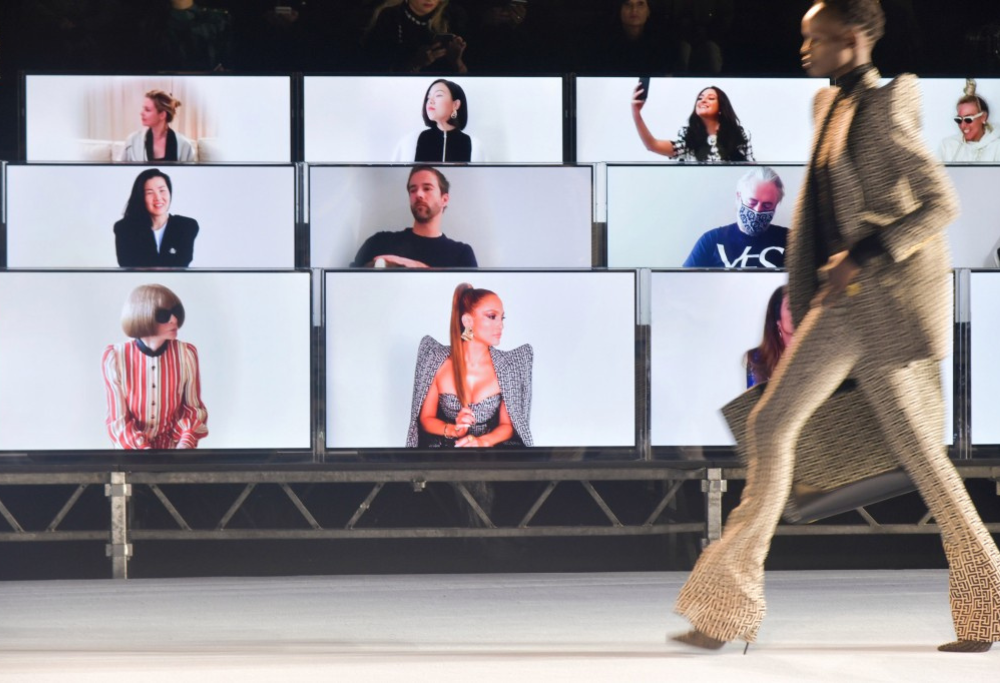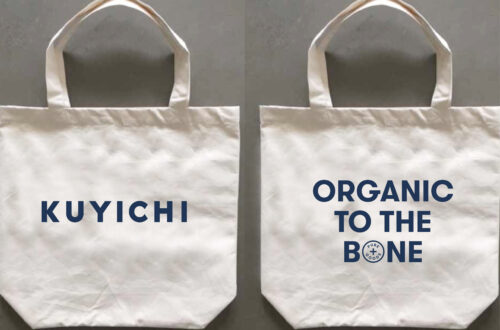In today’s fast-paced digital era, technology is revolutionizing every aspect of our lives, including the way we dress and express ourselves through fashion. From innovative design processes to enhanced consumer experiences, technology’s influence on the fashion industry is undeniable. In this blog, we will explore the fascinating ways in which technology is reshaping the fashion landscape, driving creativity, sustainability, and personalized fashion choices.
Market Insights and Statistics
- Digital Fashion Design: According to a survey by CGS, 63% of fashion industry executives said they use 3D virtual design technology to streamline their design process and bring products to market faster.
- Sustainability: The Fashion Revolution’s Fashion Transparency Index 2020 revealed that only 5% of the 250 largest fashion brands disclose supplier information, indicating the need for technology-driven transparency solutions in the industry.
- Virtual Try-On Technology: The global market for virtual try-on technology in the fashion industry is projected to reach $11.2 billion by 2027, driven by the growing popularity of augmented reality (AR) and virtual fitting rooms.
- AI and Personalization: A study by McKinsey found that 35% of Amazon’s consumer purchases come from personalized product recommendations driven by AI algorithms, highlighting the growing importance of AI-driven personalization in the fashion retail sector.
Digital Design Tools and 3D Visualization
Advancements in digital design tools and 3D visualization are transforming the way fashion designers conceptualize and create their collections. Computer-aided design (CAD) software allows designers to sketch, model, and refine their ideas efficiently, reducing lead times and facilitating seamless collaborations. Additionally, 3D visualization enables designers to view garments in virtual environments, providing a realistic representation before physical production.
Sustainable Fashion through Technology
As sustainability becomes a critical focus in the fashion industry, technology plays a pivotal role in promoting eco-friendly practices. Fashion brands are adopting innovative materials like recycled fibers, bio-fabrics, and biodegradable textiles, reducing their environmental footprint. Moreover, advanced manufacturing techniques, such as 3D printing and zero-waste cutting, minimize fabric waste and optimize resource utilization.
Personalized Fashion and AI-driven Recommendations
Technology has empowered fashion retailers to offer personalized shopping experiences to consumers. Artificial intelligence (AI) algorithms analyze vast amounts of data, including consumer preferences, browsing behavior, and purchase history, to deliver tailored product recommendations. From personalized style suggestions to custom-fit clothing options, AI is reshaping how consumers interact with fashion brands.
Augmented Reality (AR) and Virtual Fitting
AR and virtual fitting rooms have revolutionized the online shopping experience. With AR technology, consumers can virtually try on clothing and accessories before making a purchase, eliminating the guesswork and uncertainty associated with online shopping. This innovation enhances customer satisfaction and reduces returns, creating a win-win situation for both consumers and retailers.
Smart Clothing and Wearable Technology
The convergence of fashion and technology has given rise to “smart clothing” and wearable technology. Fashionable wearables like smartwatches and fitness trackers seamlessly blend style with functionality, allowing users to monitor their health and stay connected while making a fashion statement. Smart textiles embedded with sensors can monitor body temperature and activity levels, further enhancing the performance and comfort of activewear.
E-commerce and Social Media Impact
The digital age has transformed how fashion brands reach their audiences. E-commerce platforms enable global accessibility, allowing consumers to shop from anywhere at any time. Social media platforms have become powerful marketing tools, enabling fashion brands to engage with their audience, showcase new collections, and receive real-time feedback, shaping future design decisions.
The Rise of Virtual Fashion Shows
Advancements in technology have led to the emergence of virtual fashion shows and digital runways. Fashion houses are leveraging virtual reality (VR) and live-streaming technology to present their collections to a global audience. Virtual fashion shows provide an immersive experience, enabling viewers to feel like they are front-row attendees, breaking the barriers of geographical limitations and making fashion accessible to a wider audience.
Data-Driven Design Decisions
Data analytics has become an indispensable tool for fashion brands in making informed design decisions. By analyzing consumer behavior, market trends, and sales data, fashion companies can identify popular styles, preferred color palettes, and seasonal demands, helping them curate collections that resonate with their target audience. Data-driven insights also enable brands to respond quickly to shifts in consumer preferences, ensuring their designs remain relevant and appealing.
Collaborations between Fashion and Tech Giants
The convergence of fashion and technology has given rise to exciting collaborations between fashion brands and tech giants. Partnerships between renowned fashion houses and tech companies have led to innovative products, such as smartwatches designed by luxury brands and AI-powered fashion assistants that offer style advice based on personal preferences.
1Fashion Tech Startups and Entrepreneurship
The dynamic intersection of fashion and technology has created a thriving space for fashion tech startups and entrepreneurs. These innovative ventures are driving change and disruption in the industry, introducing novel concepts like sustainable fashion rental platforms, virtual styling services, and fashion marketplaces that leverage blockchain technology for authenticity and transparency.
Enhanced Customer Engagement and Interaction
Technology has redefined how fashion brands engage and interact with their customers. Interactive websites, chatbots, and social media influencers allow brands to build stronger connections with their audience. Real-time feedback, live Q&A sessions, and behind-the-scenes glimpses into the design process foster a sense of community and brand loyalty among consumers.
Fashion Gamification and Digital Avatars
Fashion gamification, such as virtual styling challenges and dress-up games, has become increasingly popular among fashion enthusiasts. Digital avatars and character customization tools allow users to experiment with different styles, inspiring creativity and encouraging exploration of fashion trends in a playful and interactive manner.
Social Impact and Tech for Good in Fashion
Technology is not only reshaping the fashion industry in terms of design and consumer experiences but also contributing to positive social impact. Tech for good initiatives in fashion focus on ethical sourcing, fair labor practices, and transparency in the supply chain. Blockchain technology is being utilized to trace the origin of raw materials, ensuring fair wages and safe working conditions for garment workers, and combating issues like counterfeiting.
Sustainable Fashion Innovation
In the pursuit of sustainability, technology is driving continuous innovation in the fashion world. From textile recycling technologies that convert post-consumer garments into new fabrics to waterless dyeing processes that reduce water consumption in manufacturing, sustainable fashion innovations are gaining momentum and shaping a more environmentally responsible industry.
Inclusivity and Body Positivity in Fashion Tech
Technology is fostering inclusivity and body positivity in fashion by challenging conventional beauty standards. Inclusive sizing algorithms, body scanning technologies, and virtual try-ons for various body types empower consumers to find clothing that complements their unique shapes and sizes, promoting a more inclusive and diverse representation in the fashion landscape.
Fashion Education and E-Learning
The integration of technology in fashion extends to education and e-learning platforms. Online courses and virtual fashion academies provide aspiring designers, stylists, and fashion enthusiasts with accessible and flexible learning opportunities to hone their skills and stay updated on industry trends from anywhere in the world.
Fashion Forecasting and Predictive Analytics
Data-driven fashion forecasting has become an essential tool for brands and retailers. Predictive analytics analyze historical data and consumer behavior to anticipate future trends, enabling brands to align their designs and offerings with evolving consumer preferences and market demands.
Fashion and Sustainability Apps
Mobile apps are emerging as powerful tools to promote sustainable fashion practices among consumers. Apps that educate users on eco-friendly fashion choices, promote second-hand shopping, or provide information on sustainable brands and certifications are becoming instrumental in fostering conscious consumerism.
Fashion Digitization and Virtual Wardrobes
Digital fashion platforms and virtual wardrobes are transforming how we shop for clothing. Virtual try-ons, mix-and-match features, and augmented reality shopping experiences provide a seamless and interactive way for consumers to curate their wardrobes, making shopping more efficient and enjoyable.
Fashion as a Medium for Technological Expression
Fashion is also embracing technology as a medium for artistic expression and storytelling. Designers are integrating LED lights, interactive fabrics, and wearable tech that respond to body movements and environmental cues, blurring the lines between fashion, art, and technology.
Technology’s influence on the fashion industry is a continuous journey of innovation, creativity, and positive change. From sustainable practices and digital experiences to enhanced inclusivity and fashion education, technology is reshaping the way we interact with fashion, amplifying its impact on our lives, environment, and society. As technology and fashion continue to intertwine, the future holds exciting possibilities, inspiring a fashion landscape that is more diverse, sustainable, and attuned to the needs and desires of consumers worldwide.






